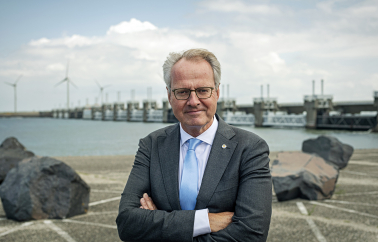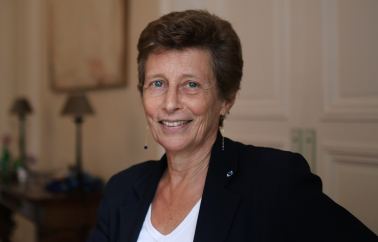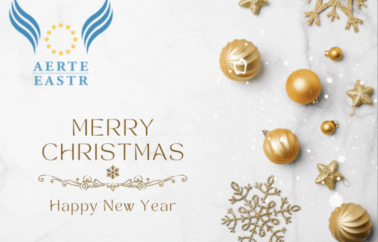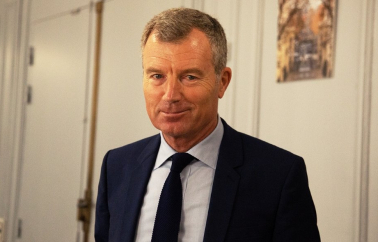
Ukrainian refugees in The Netherlands - by Han Polman, King's Commissioner of Zeeland (The Netherlands)
Ukrainian refugees in The Netherlands
April 2023
1. Governance
In the Netherlands the reception of Ukrainian refugees is brought under state emergency law which means that the mayors of our 342 municipalities are directly responsible for the reception of Ukrainian refugees and finding suitable accommodation for them. This legislation is connected to the legislation for crisis and disaster management.
Based on the European guideline and under the state emergency laws, a lot of rules, guidelines and handouts have been adopted to regulate the reception of Ukrainian refugees.
At a national level the inflow of Ukrainians is monitored. New numbers are published every Thursday. At this moment there are 91.540 Ukrainian refugees registered in The Netherlands. The population of The Netherlands is a little over 17.5 million.
Every region in the Netherlands (the country is divided into 25 safety and security regions) also monitors the influx of refugees and the number of beds they have available. This is all input to the Coordination Point Ukrainian Refugees that is put into place at a national level to regulate the distribution of refugees across the regions.
The reception of Ukrainian refugees is directly related to the reception of asylum seekers (the refugees that apply for residence in The Netherlands). Besides the 91.540 Ukrainians there are at this moment 52.000 asylum seekers in The Netherlands. There was only place for 30.000 in regular shelters. In a short period of time regions found place for 15.000 more in emergency shelters. Both the regular shelters and the emergency shelters are run by COA, the Dutch central executive organisation responsible for the reception of asylum seekers. When this proved not enough the Dutch government invoked emergency law (like the one in place for the reception of Ukrainians) to create extra shelters for which the mayors of the municipalities are responsible. At this time 7.000 refugees are in these so called crisis emergency shelters.
To prevent having to use emergency law for the reception of refugees in the future, the Dutch government is preparing a law to regulate the distribution of refugees across the municipalities. The numbers will be based on an estimate of the incoming refugees and on the number of people living in the municipalities. To create refugee shelters for at least 100 to 150 people, the municipalities are invited to work together to realize their targets.
The 12 King’s Cimmissioners (governors) chair the Provincial Coordination Comités. Members are among others the mayors, chairs of the regional security and safety regions.
2. Housing
The Netherlands is putting Ukrainian refugees up in emergency shelters (prefab units) and temporary houses (houses that were to be demolished, converted buildings like offices and former schools). There already is a shortage of permanent housing in the Netherlands. Public housing schemes are therefore not activated for the reception of Ukrainians. The focus was on the temporary reception and not on permanent housing. Permanent housing is reserved to (not limited to) refugees who obtained a residence permit.
In The Netherlands we distinguish two types of housing: municipally organized and privately organized. For both types there are rules and guidelines in place.
The municipalities are responsible for the search of collective accommodations. They make them suitable for habitation and provide them for Ukrainian refugees. The municipalities are also responsible for the exploitation of these shelters.
3. Procedures, administration and information
Under the temporary protection EU-guideline, the refugees from Ukraine are free to settle within the EU countries. However, there are several moments that they can be informed, identified and registered. When they come into the country, the military police (border control) is involved to give the people information, check their passports and such. When they report to the central Ukrainian refugee locations there is also plenty of opportunity to do such things. A lack of knowledge on who is where can occur when Ukrainians use their right to just settle somewhere. This is however dealt with by building in a registration obligation to be eligible for benefits (for living), schooling and medical care. For this you need to be registered in the ‘basic administration persons’ of the municipalities.
Ukrainian refugees can obtain information in different ways.
Central: Refugeehelp.nl, the Red Cross Ukrainian WhatsApp number,
Municipal: on websites of the local governments
By subject: on websites of involved organisations like the GGD (National Health Organisation).
4. Social and health
When Ukrainians are registered as inhibitors of the Netherlands they are eligible for financial benefits. The granted benefits are depended on the situation for example whether they live in a municipal or a private shelter.
Ukrainians can use the care system of the Netherlands. There is a special regulation in place for the cost of medical care for Ukrainian refugees. Factsheets are available for caretakers and for the refugees. For medical care interpreters and language assistants are available.
Ukrainians have a different status in the Netherlands. Their stay is not necessarily focused on integration in the Netherlands. The longer they stay, the more the focus shifts to that. Ukrainians have the possibility to work here and their children go to school which is a way of integrating. Integration starts with learning the language. This is for Ukrainian refugees not obliged. They are offered a lot of possibilities to learn the Dutch language though.
Disabled people have access to the Dutch healthcare system. A specialized organisation like the Dutch Association for people with a handicap work hard to look after their interests. They stimulate different organisations to work together to offer special care.
The access to socio-cultural activities is a matter of the municipalities. This is not nationally organised therefore it is difficult to obtain unambiguous information on this subject. More on this in the section of integration.
5. Transport
Access to means of transport is not a concern of the national Dutch government. There is not something like a mobility scheme for Ukrainian refugees.
From March 2022 until June 2022 the Dutch public transport companies (privatised) showed their solidarity to the Ukrainian refugees by giving them the opportunity to use all public transport for free. They only had to show their Ukrainian passport or ID card. This was mostly focussed on their first day of their arrival in The Netherlands to get from the border to a shelter or to continue their journey to another country. Further to be reunited with family members. After the government made local authorities responsible for giving the refugees cost of living benefits, the public transport companies revoked the rule of free transport. Ukrainian refugees are now only able to use the Dutch trains free of charge on the day of their arrival in The Netherlands. Further they have to buy a regular ticket for all public transport.
There are some local initiatives for example free public transport for children to get to school, but this is not general policy and therefore it is difficult to obtain unambiguous information on this subject.
6. Employment, training and education
Children of Ukrainian refugees have a right to go to school in The Netherlands. Parents can register their children to a school in the vicinity of where they are staying. Volunteers, the people they stay with, or local government can help them. To help the process of integrations children can first go to a school with special facilities for non-native speakers. Later the children get a regular schooling programme of which learning the Dutch language is an important part.
Refugees from Ukraine who fall under the temporary protection guideline have a right to work in The Netherlands without the need of a working permit. The rights of a refugee who works in The Netherlands are the same as those of Dutch employees. For example, minimum wage, workhours and breaks and a safe working environment. Further a Ukrainian employee will built up rights to certain social benefits like unemployment benefits and benefits in case they are unable (unfit) to work.
Vocational integration and training are not centrally organised in The Netherlands. This is a concern for the companies they work for. In general, the government is responsible for the integration of refugees.
7. Conflict prevention and management
In The Netherlands the focus concerning integration is on the refugees who apply for a residence permit. Ukrainian refugees in general don’t do that, so they are more dependent on specific initiatives of the local authorities and of volunteers. From this perspective Ukrainian refugees might be better off in rural areas instead of the big cities. However, refugees tend to choose to live in the more densely populated areas where it is much harder to be part of the community and social life. In smaler municipalities the involvement of locals is in general quit high. You don’t hear much about difficulties in these smaller communities.
The focus at first was that the reception of Ukrainian refugees was temporary. Now the situation is different and countries including The Netherlands prepare for more permanent reception. Responsible for this more permanent reception is the National Programme Ukrainian Refugees. Within this programme the focus is on integration, work, education, housing, healthcare and social benefits.
Refugees from Ukraine who want to travel to another country or want to return to Ukraine can get help from the International Organisation for Migration (IOM) or from the Dutch government service ‘Return and Departure’. To help municipalities and other organisations in dealing with this, the Dutch government made an infographic ‘Return refugees from Ukraine’.



